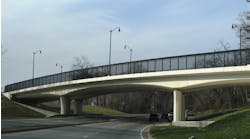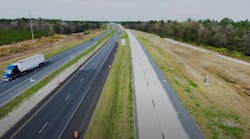The chief executive officer of the Associated General Contractors of America, Stephen E. Sandherr, issued the following statement in response to the decision by the U.S. Environmental Protection Agency (EPA) to withdraw proposed “numeric limits” on the amount of dirt the agency will allow in storm water from construction sites:
“The fact that the EPA recognizes the serious flaws in the data supporting its efforts to impose a rigid, one-size-fits-all limit on the amount of dirt in rainwater leaving construction sites is encouraging. Indeed, contractors are already required to take significant measures to ensure that dirt—clean, uncontaminated dirt—does not escape from project sites. Setting a specific limit on how much dirt should be in rainwater will only force contractors to spend billions more on new dirt-busting measures that may not work, expose firms to costly lawsuits from outside groups and put them at risk of receiving tens of thousands in daily fines.
“Unfortunately, the EPA is only seeking to delay imposing its new mud rule, instead of abandoning the idea all together. In other words, this administration remains committed to the idea that protecting the Earth from dirt is more important than protecting the economy from costly, prescriptive and questionable new regulatory measures.”
The National Association of Home Builders (NAHB) also responded to the EPA decision:
Today, the agency announced that it still couldn't justify any specific limit and will start over again. EPA will talk to home builders, environmental scientists and other members of the public to gather better data—a solution that NAHB has advocated for more than three years.
"EPA set a numeric limit for water cloudiness that was based on flawed analyses," said NAHB Chairman Bob Nielsen, a builder in Reno, Nev.
Both the Small Business Administration and the federal Office of Management and Budget had warned EPA that the regulation would not hold up, joining NAHB in voicing concerns about the monitoring and sampling requirements.
"In its calculations, EPA relied on questionable data, including figures obtained from the vendors that would have supplied the expensive systems home builders would have been required to use. That's no way to come up with national policy," he said.
Because terrain, geography and rainfall vary significantly in most regions of the country, NAHB has long held that a nationally applicable numeric limit is neither defensible nor practicable. "It's our hope that EPA's research will take that fact into account," Nielsen said.
In the meantime, NAHB is redoubling its efforts to collect turbidity data from its members' construction sites to help ensure that the eventual ruling makes good scientific sense.


